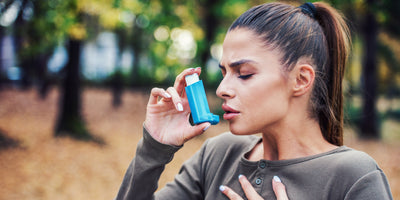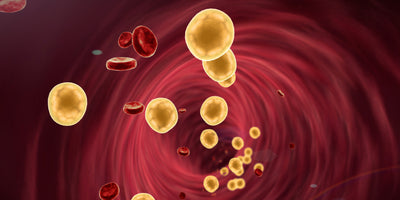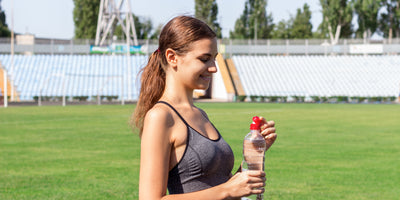
Unlocking Peak Performance: How Electrolyte Hydration Enhances Athletic Endurance and Recovery
Introduction
In the world of athletics, where every second counts and recovery is as crucial as the training itself, understanding the science of hydration and electrolyte balance becomes the game-changer. The quest for peak performance pushes athletes to explore every facet of sports science, with Unlocking Peak Performance: How Electrolyte Hydration Enhances Athletic Endurance and Recovery standing out as a critical piece of the puzzle. This comprehensive exploration sheds light on the intricate dance of electrolytes in our body during intense physical exertion, their profound impact on endurance, and their undeniable role in recovery. Through this article, we peel back the layers of how strategic electrolyte management can propel athletes into achieving their best performance while ensuring a swift and efficient recovery process.
Electrolyte hydration isn't just about quenching thirst; it's about understanding the physiological demands placed on the body during exercise and how to effectively meet those needs to optimise performance and recovery. As we dive deeper into this topic, we'll uncover the mechanisms behind electrolyte loss, the dangers of imbalance, and the strategies athletes can employ to maintain this delicate balance. Armed with this knowledge, athletes can look forward to not just pushing their limits but shattering them, all while safeguarding their health and well-being.
The Science of Sweat and Electrolyte Loss
Sweating is the body's natural air conditioning system, kicking into high gear during exercise to help regulate body temperature. However, this cooling mechanism comes at a cost: significant loss of electrolytes, essential minerals like sodium, potassium, magnesium, and calcium that are vital for maintaining the body's balance of fluids. These minerals play key roles in various bodily functions, including muscle contraction, nerve function, and hydration. When we sweat, we don't just lose water; we lose these precious electrolytes, setting the stage for potential imbalance and its accompanying challenges.
The implications of electrolyte loss extend far beyond a mere dip in performance. An imbalance can trigger a range of symptoms from the mildly inconvenient, such as muscle cramps and fatigue, to the more severe, like hyponatremia (low blood sodium levels), which can be life-threatening in extreme cases. This makes understanding and managing electrolyte loss through proper hydration and nutrition strategies not just a matter of athletic performance but of health and safety as well.
The Dual Importance of Water and Electrolytes
Hydration in the context of athletic performance involves a nuanced balance between water and electrolytes. While water is essential for life and plays a critical role in keeping our bodies hydrated and temperature-regulated, it's only part of the equation when it comes to athletic performance and recovery. Electrolytes, on the other hand, are the unsung heroes that work in concert with water to ensure our bodies function optimally. They help maintain nerve and muscle function, balance blood acidity and pressure, and help rebuild damaged tissue. Without a proper balance of electrolytes, even the most hydrated athlete can suffer from decreased performance, muscle cramps, or worse.
Understanding the symbiotic relationship between water and electrolytes is crucial for athletes aiming for peak performance. During prolonged or intense exercise, the body loses water and electrolytes at an accelerated rate, leading to decreased blood volume and increased fatigue. By ensuring not only adequate water intake but also the replenishment of lost electrolytes, athletes can maintain their performance levels, delay the onset of fatigue, and ensure their body functions harmoniously. This delicate balance is what allows athletes to push their limits while also safeguarding their health.
Recognising and Preventing Electrolyte Imbalance
Electrolyte imbalance can stealthily undermine an athlete's performance and well-being, often manifesting through symptoms that may initially seem benign. Early signs such as muscle cramps, fatigue, nausea, and headaches can quickly escalate to more severe issues like irregular heartbeat, confusion, and extreme fatigue, which are indicative of conditions like hyponatremia or hyperkalemia (excess potassium). These conditions not only affect performance but can pose serious health risks if not promptly addressed. Recognising these symptoms early is crucial for athletes to take immediate corrective action, such as adjusting their hydration and electrolyte intake.
Prevention of electrolyte imbalance begins with a proactive approach to hydration and nutrition. Athletes should not wait until they feel thirsty to drink water, as thirst is a late indicator of dehydration. Instead, maintaining a consistent hydration schedule, especially during prolonged or intense exercise, can help prevent imbalances. Integrating electrolyte-rich sports drinks or foods into one’s diet before, during, and after exercise ensures a steady supply of these essential minerals, counteracting the losses incurred through sweat. Moreover, understanding individual sweat rates and electrolyte loss patterns can help athletes customise their hydration strategies to their specific needs, further safeguarding against imbalance.
Tailoring Hydration to Individual Needs
The concept of a universal hydration strategy is a myth, especially in the realm of athletic performance. Individual factors such as body weight, sweat rate, exercise intensity, and environmental conditions (temperature and humidity) significantly influence an athlete's hydration and electrolyte needs. For instance, an athlete training in a hot and humid environment will experience more substantial electrolyte and fluid loss compared to someone exercising in cooler, drier conditions. Similarly, the duration and intensity of the exercise play critical roles in determining the extent of hydration required.
Customising hydration strategies involves a thoughtful analysis of these individual factors, combined with trial and error, to ascertain what works best for each athlete. This may involve adjusting the concentration of electrolyte supplements, the timing of intake, or even the choice of hydration sources. Athletes might benefit from working with sports nutritionists or utilising wearable technology to track their hydration status and sweat composition, enabling a more precise adjustment to their hydration plan. This tailored approach ensures that athletes can maintain optimal hydration and electrolyte balance, enhancing their performance and recovery.
Advances in Hydration Supplements and Sports Drinks
The sports nutrition market has witnessed significant innovation, offering athletes a plethora of options for hydration and electrolyte replacement. From traditional sports drinks to specialised electrolyte powders, effervescent tablets, and even electrolyte-infused waters, the choices are vast. These advancements provide athletes with the flexibility to select products that best match their taste preferences, dietary restrictions, and specific electrolyte needs. While traditional sports drinks have been the go-to for many, concerns over their sugar content and artificial additives have led some athletes to seek alternatives.
Emerging products in the market are designed with these concerns in mind, offering lower sugar options, natural ingredients, and customisable electrolyte concentrations to suit various exercise demands and health considerations. Additionally, the development of isotonic, hypertonic, and hypotonic drinks—each with different osmolarities—allows athletes to choose beverages based on their hydration needs, whether they seek quick rehydration, energy replenishment, or a balance of both. As research in sports science progresses, these innovations will continue to evolve, providing athletes with even more targeted solutions to support their performance and recovery efforts.
Natural Sources of Electrolytes

While supplements and sports drinks are convenient for on-the-go electrolyte replenishment, incorporating natural food sources of electrolytes into an athlete's diet offers additional nutritional benefits. Foods like bananas, which are high in potassium, dairy products rich in calcium, nuts and seeds loaded with magnesium, and table salt, a common source of sodium, can provide a balanced spectrum of essential minerals. These whole foods come packed with other beneficial nutrients, contributing to overall health and aiding in the recovery process.
The advantages of obtaining electrolytes from natural sources extend beyond mere nutritional value. Whole foods can also help mitigate the risk of consuming excessive amounts of added sugars and artificial ingredients often found in processed electrolyte replacements. Athletes looking to optimise their electrolyte intake through diet should focus on a variety of colourful fruits and vegetables, lean proteins, and whole grains. These foods not only support electrolyte balance but also offer antioxidants and other vital nutrients, enhancing the body's ability to recover and perform.
Hydration Strategies for Endurance Sports
Endurance athletes face unique challenges when it comes to hydration and electrolyte management. The extended duration of activities like marathons, long-distance cycling, and triathlons increases the risk of dehydration and electrolyte imbalance, necessitating a well-planned hydration strategy. For these athletes, hydration begins well before the event and continues through to recovery. Pre-event hydration involves increasing fluid intake several days before the event, focusing on beverages with added electrolytes to start the activity well-hydrated and electrolyte-balanced.
During the event, endurance athletes should aim to consume fluids at regular intervals, ideally before the onset of thirst, which is a lagging indicator of dehydration. The goal is to match fluid and electrolyte intake as closely as possible to losses through sweat, which can be estimated during training sessions. Post-event, the focus shifts to recovery, emphasising rehydration and replenishing any electrolyte deficits incurred during the activity. This might involve consuming a mix of sports drinks, water, and electrolyte-rich foods to quickly restore balance.
Summary
Understanding Electrolyte Loss:- Sweating during exercise leads to significant loss of essential minerals (electrolytes) like sodium, potassium, magnesium, and calcium, which are crucial for bodily functions.
- Electrolyte imbalance can cause symptoms ranging from muscle cramps and fatigue to more severe conditions like hyponatremia.
- Both water and electrolytes are vital for maintaining blood volume, regulating body temperature, and ensuring muscle function.
- Proper balance helps prevent fatigue, allowing athletes to sustain longer periods of physical activity.
- Athletes should be aware of the signs of electrolyte imbalance and adopt preventive strategies through diet and hydration.
- Consistent hydration, especially during prolonged or intense exercise, can help prevent imbalances.
- Hydration strategies should be customised based on individual factors like body size, exercise intensity, climate, and sweat rate.
- Personalised hydration ensures optimal performance and health.
- The market offers a variety of products for electrolyte replenishment, including sports drinks, electrolyte powders, and effervescent tablets.
- Athletes should choose products that match their specific needs, considering factors like sugar content and artificial additives.
- Incorporating natural food sources of electrolytes into an athlete's diet offers additional health benefits and can support electrolyte balance.
- Foods rich in key electrolytes include bananas, dairy products, nuts, seeds, and leafy greens.
- Endurance athletes require specific hydration strategies before, during, and after events to manage the increased risk of dehydration and electrolyte imbalance.
- Effective strategies include pre-event hydration, regular fluid intake during the event based on estimated sweat losses, and post-event rehydration and electrolyte replenishment.









